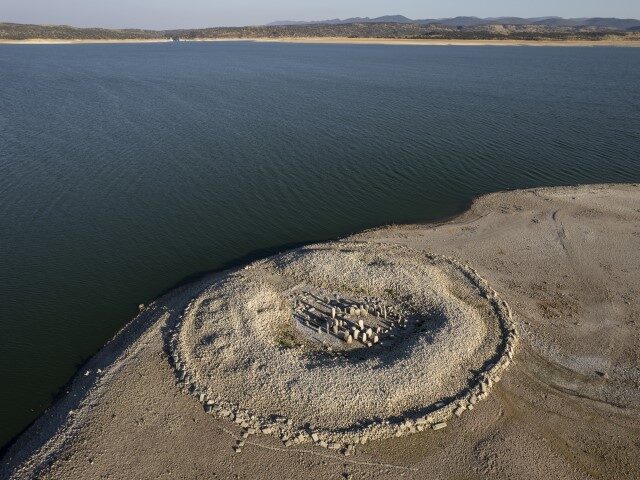Spain’s severe drought has revealed an ancient stone circle located in a dam with low water levels.
The Dolmen of Guadalperal, also known as the “Spanish Stonehenge,” is thought to date back to 5,000 BC, NBC News reported Friday.
The structures are currently visible at the Valdecanas reservoir in Caceres province.
“It’s a surprise, it’s a rare opportunity to be able to access it,” according to archaeologist Enrique Cedillo of Madrid’s Complutense University, who is studying the structure.
Aerial video footage showed the stones erected in a huge circle. In the center were more upright stones clustered together:
The ancient structure consists of approximately 140 boulders, Smithsonian Magazine reported in 2019:
Likely used as both a temple and cemetery, the monument once featured menhirs, or tall upright stones, topped by horizontal slabs of stone to form an enclosed dolmen, which is a single-chambered tomb. An engraved menhir stood guard at the structure’s entrance, while a pebble wall later built around the dolmen cemented its status as a collective burial site.
German archeologist Hugo Obermaier discovered the site in 1926. However, the area flooded in the early 1960s because of a development project during Francisco Franco’s dictatorship, the NBC article said.
After that event, it has emerged only a few times.
Historical and tourism groups in the area have expressed a desire to move the stones to a museum or another location.
Meanwhile, the drought has affected almost half of Europe, the Associated Press (AP) reported August 12.
“It is damaging farm economies, forcing water restrictions, causing wildfires and threatening aquatic species,” the outlet said.
“There has been no significant rainfall for almost two months in the continent’s western, central and southern regions. In typically rainy Britain, the government officially declared a drought across southern and central England on Friday amid one of the hottest and driest summers on record,” it said.
The conditions were expected to drag on in what is believed to be the worst drought in the past 500 years.

COMMENTS
Please let us know if you're having issues with commenting.